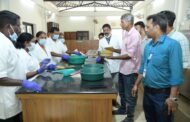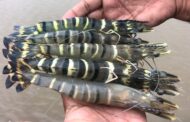Kochi: India’s first manned deep ocean mission ‘Samudrayaan’ into a 6000 m depth using the manned submersible vehicle ‘Matsya’ is expected to launch by the end of 2026, said Dr Balaji Ramakrishnan, Director of the National Institute of Ocean Technology (NIOT). He was addressing after inaugurating a 5-day national training on the role of fisheries in the blue economy at the ICAR-Central Marine Fisheries Research Institute (CMFRI) on Tuesday.
The mission will enable deep-sea exploration down to 6000 meters, carrying three scientists on board ‘Matsya’. Developed with India’s indigenous technology, this advanced 25-tonne 4th generation vehicle is specifically engineered to withstand the extreme pressure and temperature in the deeper ocean, with a hull made of titanium. NIOT, under the Ministry of Earth Sciences, is the implementing nodal agency of this deep ocean mission.
“This mission is expected to be a game-changer for India’s deep-sea research, opening up avenues for the assessment of both living and non-living resources in deep ocean, comprehensive ocean observation, and the potential for deep-sea tourism. The launch is planned in a step by step process, as a crucial phase of 500m depth trial is anticipated by the end of this year”, Dr Ramakrishnan said, adding that the journey to dive deep will take four hours, and the same time is expected to come out. The mission will be instrumental in collecting critical samples from the deeper oceanic zone, offering opportunities for scientists to understand the unique characteristics of the organism and the water in the region”, he said.
Citing another breakthrough in the sector, he said that an innovative technology named ‘Samudrajivah’ has been developed focused on improved large-scale open sea age farming. “The technology is currently in the demonstration phase”, NIOT Director said pointing out that these electronically monitored submerged fish cages are designed for off shore regions, capitalising on the nutritionally rich deep-sea environment to optimize the fish growth.

“Having different sensors, Samudrajivah is capable of remote monitoring of individual fish biomass, growth and movement and water quality parameters”, he added. The technology is expected to be one of the major developments in India’s food security.
These emerging technologies would be crucial for sustainable development in the marine fisheries sector and significantly supporting the country’s blue economy initiatives, Dr Balaji Ramakrishnan said.
The training programme is jointly organised by the CMFRI and Vijnana Bharati (VIBHA).
CMFRI Director Dr Grinson George presided over the function. He said that integrating NIOT’s technology with CMFRI’s marine research achievements would be instrumental in the advancement of a healthy blue economy in India. “Technological enhancement is an urgent need to fully exploit the potential of mariculture activity in India, especially seaweed cultivation”, he said, emphasising the need for advisories or early warning systems for jellyfish blooms and harmful algal blooms to support fishermen and fish farmers.
Dr. Satheesh Shenoi, former Director of the Indian National Centre for Ocean Information Services (INCOIS), Shri Vivekananda Pai, Secretary General of VIBHA, Dr. S. Prasanna Kumar, former Director of the National Institute of Oceanography (NIO), and Dr. Ratheesh Kumar Raveendran, coordinator of the training programme also spoke on the occasion.






